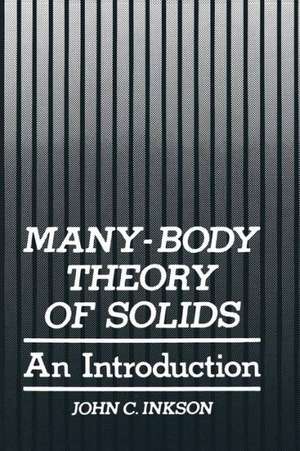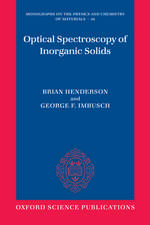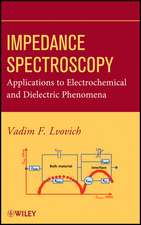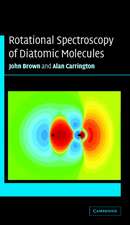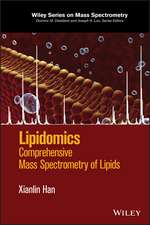Many-Body Theory of Solids: An Introduction
Autor John C. Inksonen Limba Engleză Paperback – 26 noi 2012
Preț: 390.84 lei
Nou
Puncte Express: 586
Preț estimativ în valută:
74.79€ • 81.49$ • 63.02£
74.79€ • 81.49$ • 63.02£
Carte tipărită la comandă
Livrare economică 23 aprilie-07 mai
Preluare comenzi: 021 569.72.76
Specificații
ISBN-13: 9781475702286
ISBN-10: 1475702280
Pagini: 344
Ilustrații: X, 334 p.
Dimensiuni: 155 x 235 x 18 mm
Greutate: 0.48 kg
Ediția:Softcover reprint of the original 1st ed. 1984
Editura: Springer Us
Colecția Springer
Locul publicării:New York, NY, United States
ISBN-10: 1475702280
Pagini: 344
Ilustrații: X, 334 p.
Dimensiuni: 155 x 235 x 18 mm
Greutate: 0.48 kg
Ediția:Softcover reprint of the original 1st ed. 1984
Editura: Springer Us
Colecția Springer
Locul publicării:New York, NY, United States
Public țintă
ResearchCuprins
1. The Interacting System.- 1.1. The Basic Problem.- 1.2. The Jellium Solid.- 1.3. Hartree Theory—The Sommerfeld Model.- 1.4. Hartree-Fock.- 1.5. Exchange and Correlation Holes.- 1.6. Correlation Effects and the Thomas-Fermi Model.- Problems.- 2. Green’s Functions of the Single-Particle Schrödinger Equation.- 2.1. Green’s Functions of the Schrödinger Equation.- 2.2. Green’s Functions and Perturbation Theory.- 2.3. Time-Dependent Green’s Functions.- 2.4. Green’s Function Diagrams.- 2.5. Green’s Functions or Wave Functions?.- Problems.- 3. Quantization of Waves (Second Quantization).- 3.1. Waves and Particles.- 3.2. The Linear Chain of Atoms.- 3.3. The General Quantization of a Wave System.- 3.4. Quantization of the Electromagnetic Field.- 3.5. Elementary Excitations and “Particles”.- 3.6. Perturbations and the Elementary Excitations.- 3.7. Summary.- Problems.- 4. Representations of Quantum Mechanics.- 4.1. Schrödinger Representation.- 4.2. Heisenberg Representation.- 4.3. Interaction Representation.- 4.4. Occupation Number Representation.- 4.5. Interaction between Waves and Particles.- 4.6. Field Operators.- Problems.- 5. Interacting Systems and Quasiparticles.- 5.1. Single-Particle States.- 5.2. Absorbing Media.- 5.3. Exact and Approximate Eigenstates.- 5.4. Landau Quasiparticles.- Problems.- 6. Many-Body Green’s Functions.- 6.1. Definition of the Many-Body Green’s Function.- 6.2. Relationship to Single-Particle Green’s Function.- 6.3. Energy Structure and the Green’s Function.- 6.4. The Lehman Representation and Quasiparticles.- 6.5. Expectation Values.- 6.6. Equation of Motion for the Green’s Function.- 6.7. Hartree and Hartree-Fock Approximations.- 6.8. The Self-Energy.- Problems.- 7. The Self-Energy and Perturbation Series.- 7.1.Functional Derivatives and the Calculation of G and ?.- 7.2. Iterative Solution for the Green’s Function and Self-Energy.- 7.3. Screening and the Perturbation Series.- 7.4. The Screened Interaction and Selective Summations.- 7.5. The Uniform System.- Problems.- 8. Diagrammatic Interpretation of the Green’s Function Series.- 8.1. Diagrammatic Interpretation of the Perturbation Series.- 8.2. Diagrammatic Expansion.- 8.3. Infinite Series and Irreducible Diagrams.- 8.4. The Hartree Potential.- 8.5. The Uniform System.- 8.6. Rules for Evaluating Diagrams.- 8.7. Selective Summations.- 8.8. Practical Aspects of Diagrammatics.- Problems.- 9. The Normal System.- 9.1. The Jellium Solid Response Function.- 9.2. The Self-Energy (Physical Considerations).- 9.3. Evaluation of the Self-Energy and Quasiparticle Properties.- 9.4. Landau Quasiparticles.- 9.5. Insulating Systems.- 9.6. Surfaces.- Problems.- 10. Thermal Effects on the Green’s Function.- 10.1. The Density Matrix.- 10.2. Statistical Mechanics.- 10.3. The “Thermal” Heisenberg Representation.- 10.4. Evaluation of the Perturbation Expansion.- 10.5. Periodicity of G and the Extension to Energy Dependency.- 10.6. Real-Time Thermal Green’s Functions.- Problems.- 11. Boson Particles.- 11.1. Collective Excitations in Solids.- 11.2. Electron-Phonon System.- 11.3. Plasmons and the Total Interaction.- 11.4. Boson Systems with a Condensate.- Problems.- 12. Special Methods.- 12.1. The Density Functional Method (Nearly Uniform Electron Gases).- 12.2. Highly Localized Systems (Anderson-Hubbard Models).- 12.3. Canonical Transformations.- 12.4. Mean-Field Theory.- Problems.- 13. Superconductivity.- 13.1. Cooper Pairs.- 13.2. Canonical Transformations.- 13.3. Propagator Approach.- Problems.- Appendix: List of Symbols.
